South Moravia: Czech Republic’s wine cellar a rural gem
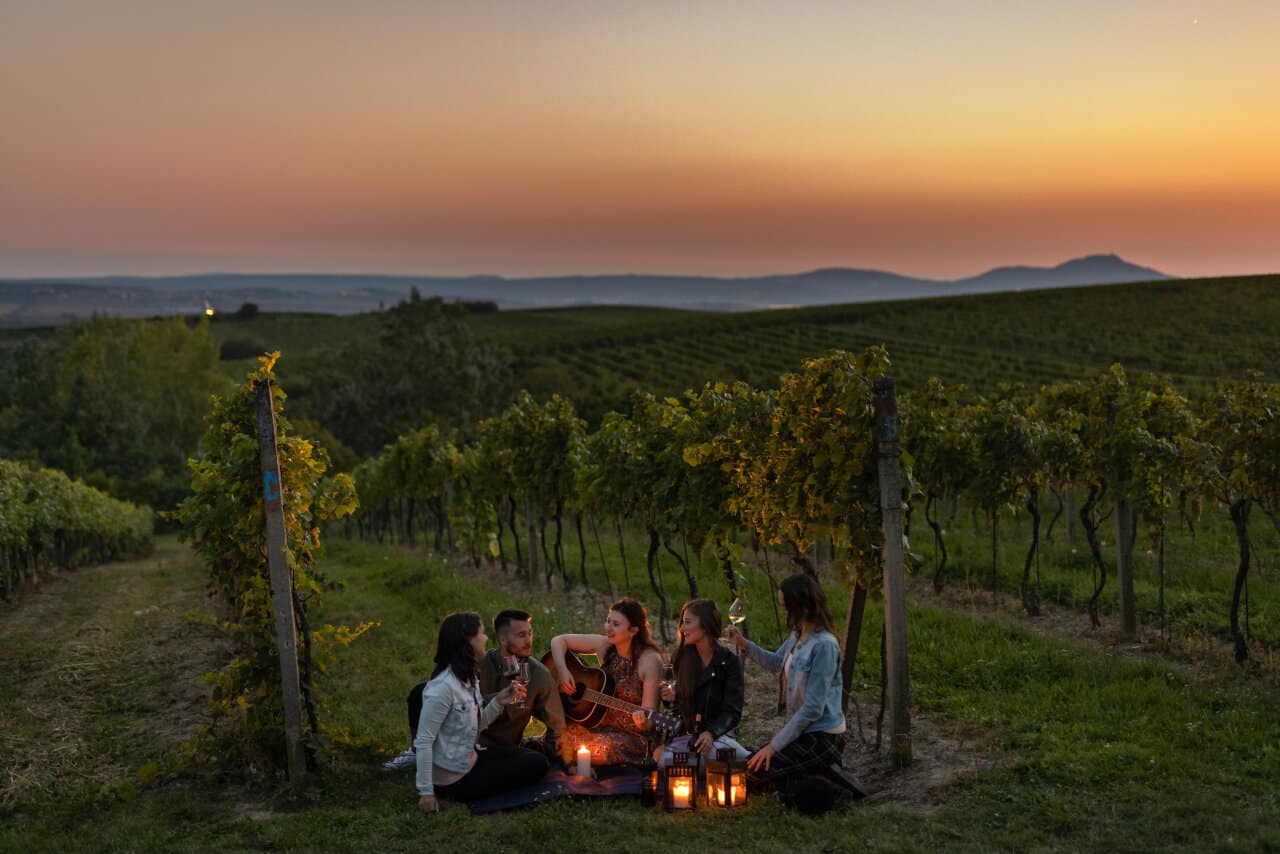
BRNO, Czech Republic – “When in Czech Republic, go to Bohemia for beer. Go to Moravia for wine.”
I heard that line many times during my week in Brno, Czech Republic’s second-largest city. Put another way, beer is urban; wine is rural. That’s why roaming around Moravia, Czech Republic’s eastern half, is mostly a journey through a lightly trodden patch of beautiful European countryside.
Eight years ago I took a train from Prague east to Slovakia. It went through pretty gingerbread villages and others left in disrepair from a communist system that died long ago. Last month I stuck to South Moravia, where vineyards share real estate with castles, where views of lakes and rivers look even better with a glass of Moravian Pinot Gris.
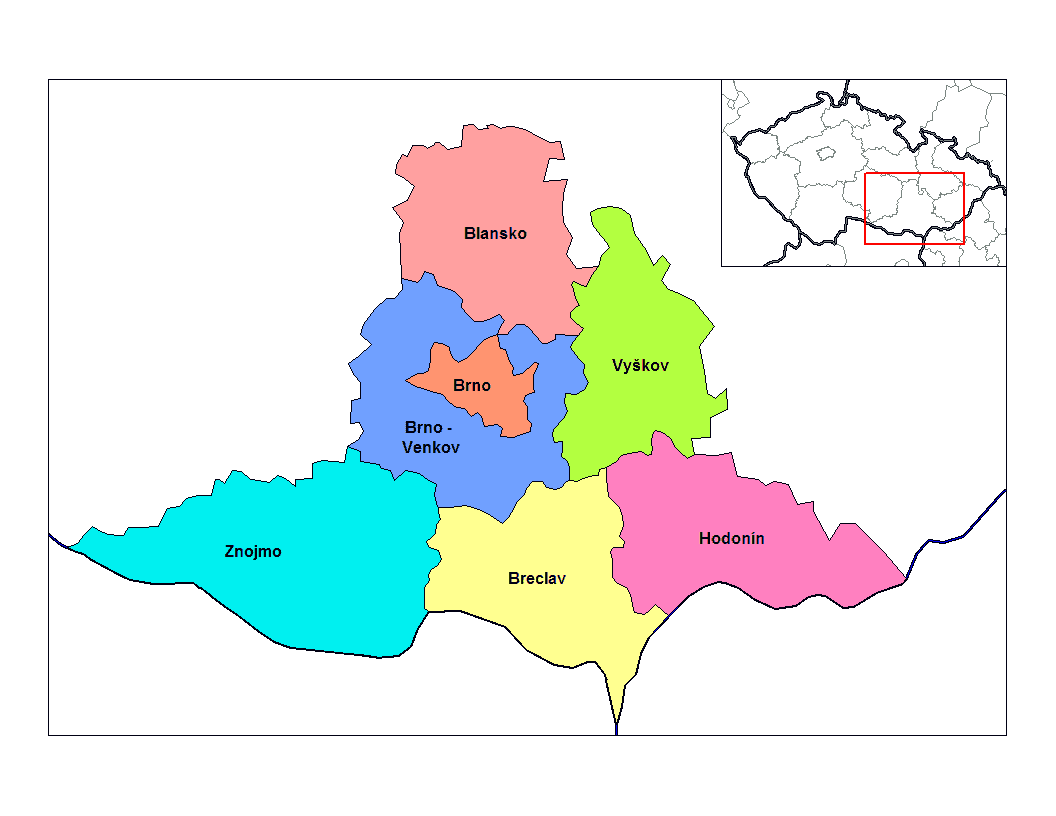

South Moravia is the Tuscany of the Czech Republic, the Napa Valley of Moravia. It’s home to 850-900 wineries in an area just slightly larger than Palestine. If Czech beer was a disappointment, I gave a bigger Na zdravi! (“Cheers” in Czech) to Moravian wine.
This area has also emerged from the death of communism to become a Czech success story. The 1.19 million people in South Moravia have the third highest GDP of Czech Republic’s 13 regions.
It was good to get out of Brno, a quaint, underrated city that seemed more Czech than Prague. To see real rural South Moravia, hop a boat. About 40 fellow travel writers in town for the Traverse 22 travel bloggers conference took a ride up the Brno Reservoir.
On a gray, drizzly day, an Uber took three of us to the northwest edge of town where charming wooden beer bars with long patios lined the road leading to the loading dock. We joined a dozen other writers for beers and coffees right as the heavens opened with a cloudburst that looked straight out of the Amazon Rainforest.
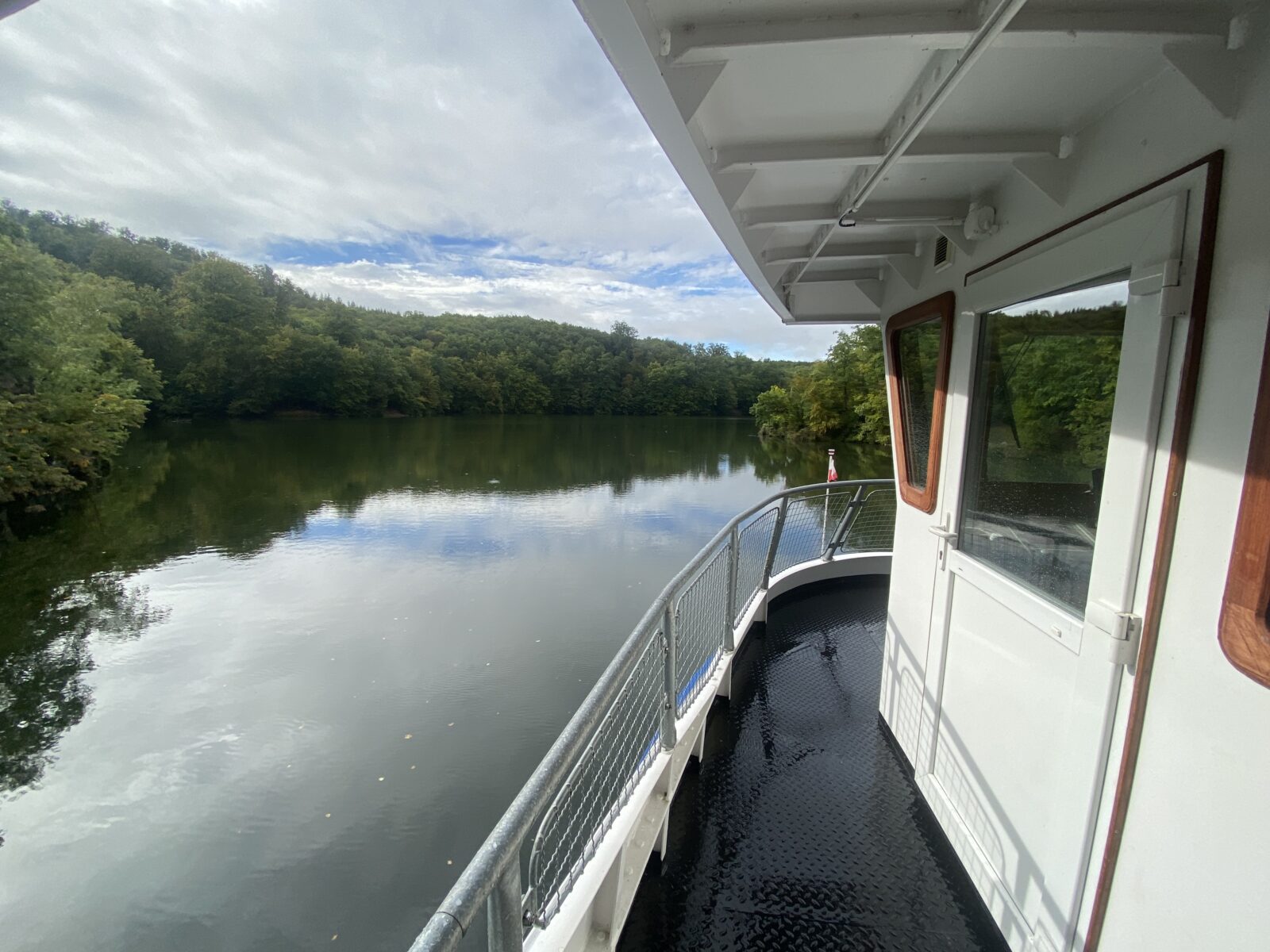
The rain only slightly let up by the time we boarded and we slowly headed up the calm, green water. Those who still associate Czech Republic with Czechoslovakia get a new impression on the Brno Reservoir. Forests lined each side with picnic tables and children’s play areas in various clearings.
We passed a boat rental just about when a man leisurely paddled by us in his kayak. A lone duck followed in his wake. A few houses, apparently summer homes for the Czech Republic’s new wealthy, were scattered around the forest.
It was mid-September and the colors had started to change into golds and yellows. It wasn’t Vermont in October but it made Czech Republic in September look like a great alternative from Europe’s teeming masses in August.
If not for a wise Czech in a guard tower, the reservoir may not exist today.
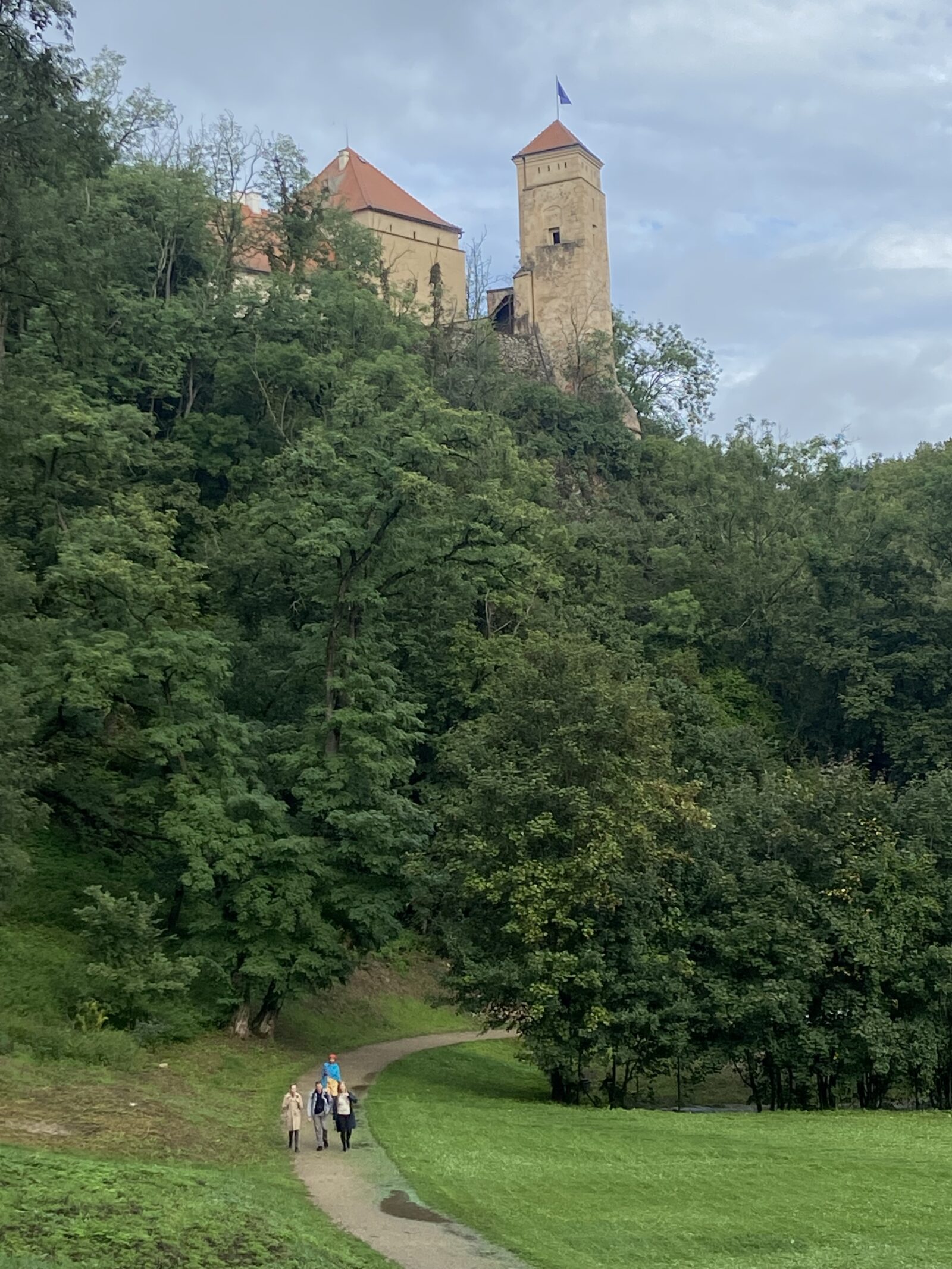
The history
Built from 1936-40 and covering 640 acres, Brno Reservoir was the target of the retreating Nazis at the end of World War II. They put mines on the nearby roads to destroy the reservoir, eliminate transport routes and kill people. In other words, they were just being Nazis.
However, a guard named Sikula sniffed out the plot and warned the oncoming Russian army convoy. They disabled the bombs but couldn’t prevent Sikula from getting shot and wounded. A plaque in the guard’s honor is on the dam.
After about 90 minutes the boat docked and we took a leisurely stroll through the forest to the area’s landmark. Veveri Castle can be seen for miles. It was founded by Premyslid Duke Conrad of Brno in the 11th century as a hunting lodge. The Bohemians, who took over the area in the 11th century, turned it into a prison. In ensuing centuries it changed ownership numerous times, in modern times it became a failed convention center and eventually closed when communism did from 1989-94.

It eventually opened back to the public in 2002 and is a great place to get a low-flying bird’s eye view of the countryside from the 14th century Square Tower. Look through one of the windows atop a claustrophobic staircase and Van Gogh couldn’t have caught the beauty any better.
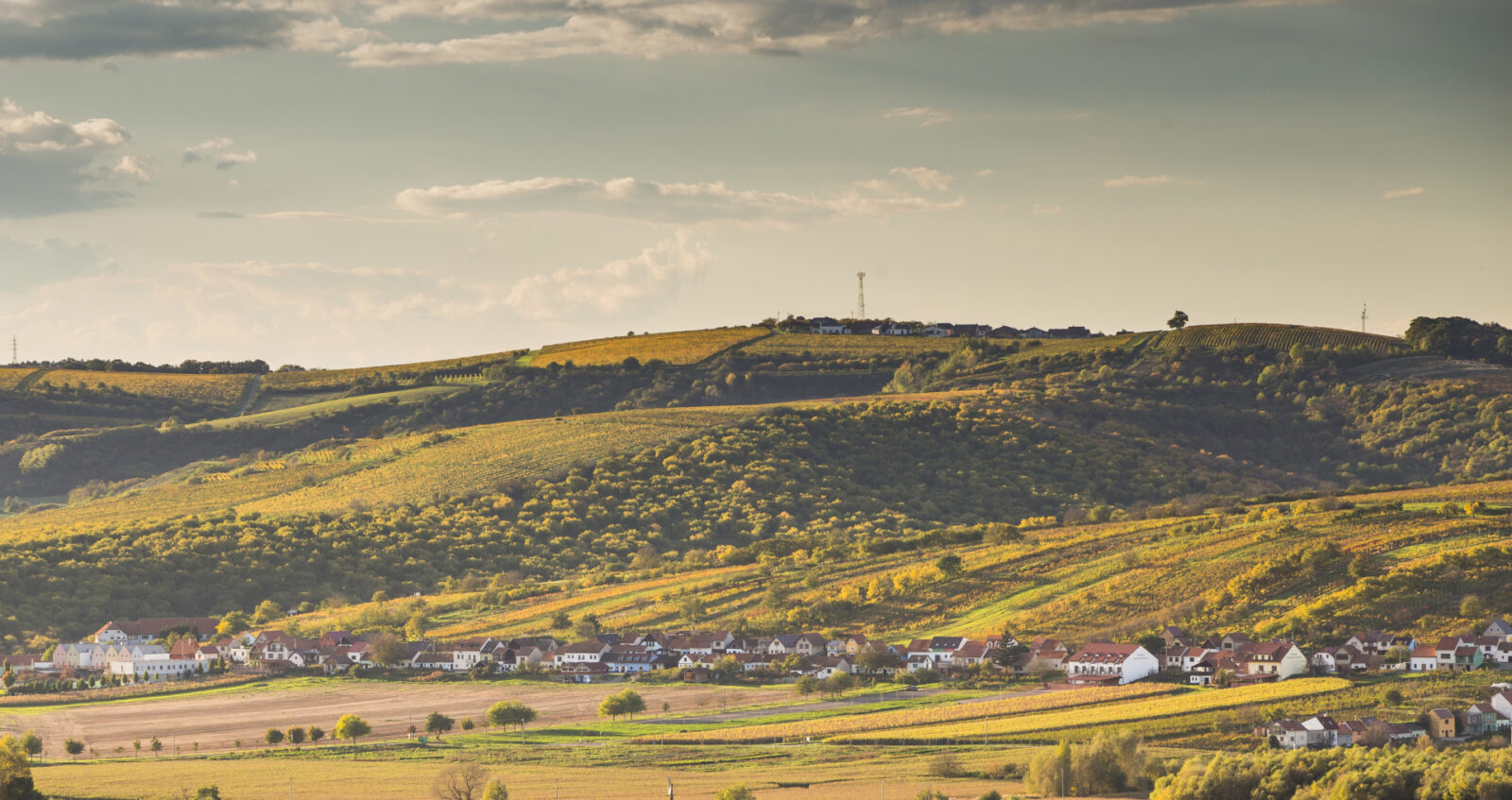
Other things to do
South Moravia packs many activities and points of interest in a bite-size area. Such as:
- The Dyje River where you can paddle kayaks 15 miles to the Krhovice campsite and then further on to the wine-growing area of Hradek.
- The castle ruins of Cornstejn where jugglers, medieval music and swordsmen perform every summer. And don’t miss the torture chamber!
- The Vranov Reservoir, the warmest and cleanest body of water in Czech Republic. Swim in the shadow of the Baroque chateau Vranov. From here you can cycle to Austria.
- Mountain biking through the White Carpathians. The Trail of Life has five routes with panoramic views of the White Carpathians on the Slovak border. Cycle through meadows, forests and natural drops. Facilities and a training area are right next to the reservoir.
- Aqualand Moravia, 20 minutes from Brno, is one of the largest swimming pool complexes in the country. Fed by a thermal mineral source, it features 20 toboggan and water slides with views of Palava, an archaeological area that’s a UNESCO Historical Site
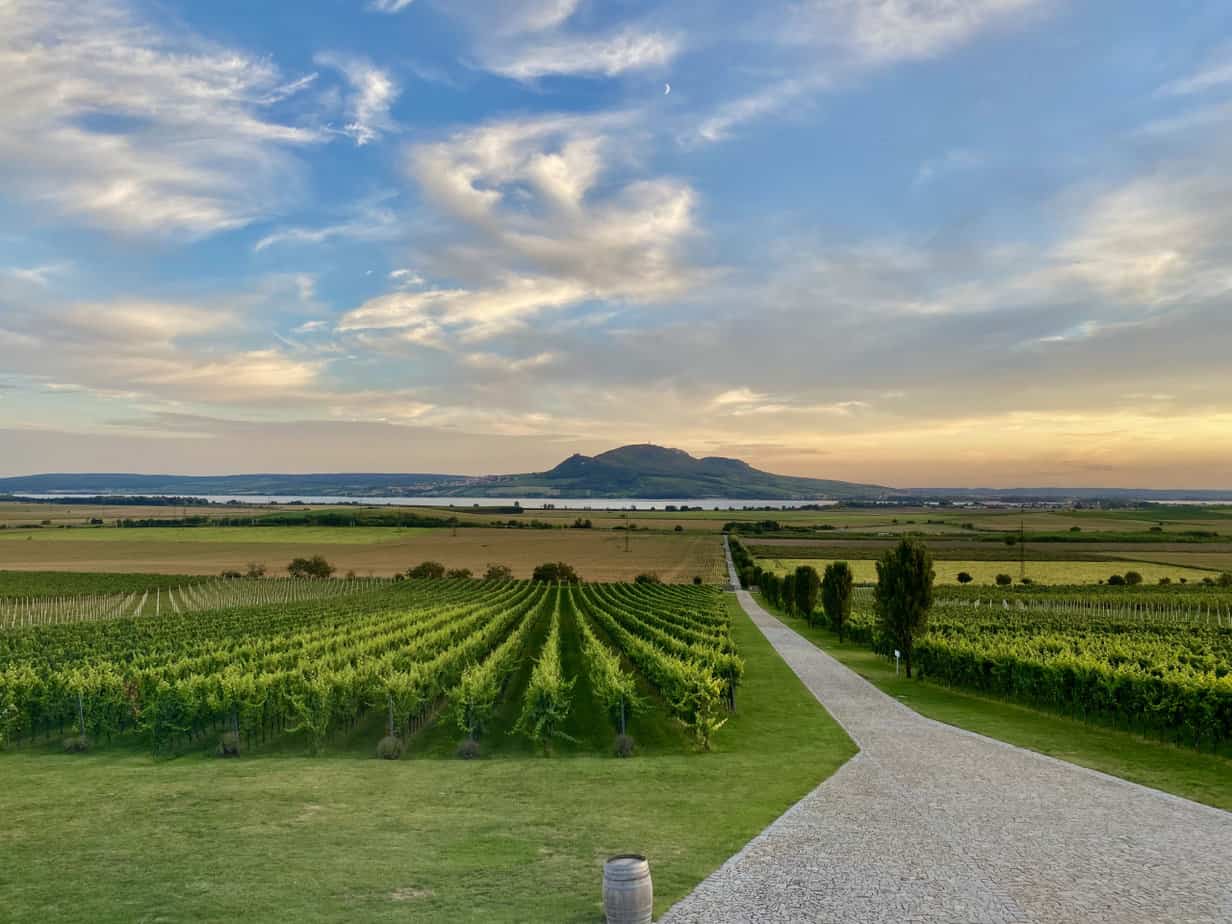
Wine
However, come to South Moravia with a thirst. Forget beer. You can get that anywhere in Czech Republic. South Moravia’s slice of Czech heaven is where I polished a growing wine palate after 8 1/2 years living in Rome.
My first surprise came at a big party atop Brno’s Spilberk Castle. Besides the beautiful nighttime views of the city below, I was blown away by the crisp Rieslings and Chardonnays. Ego winery makes a very good Riesling from 2021.

However, the best wine I had all week was a 2019 Barrique Rulandske Modre, a Pinot Noir that rivaled anything I’ve had in my native Oregon, a Pinot Noir hotbed.
With 545,000 barrels a year, Moravia produces 96 percent of Czech Republic’s wine. It’s no wonder considering its geography. It’s on the same parallel as Champagne and Burgundy and features a protected, cool climate.
They’ve made wine here since the Roman Empire. In 278 A.D., Emperor Marcus Aurelius Probus had his men grow grapes near what is now Pasohlavky, about 25 miles south or Brno. In the 13th century, monasteries planted vineyards in South Moravia.
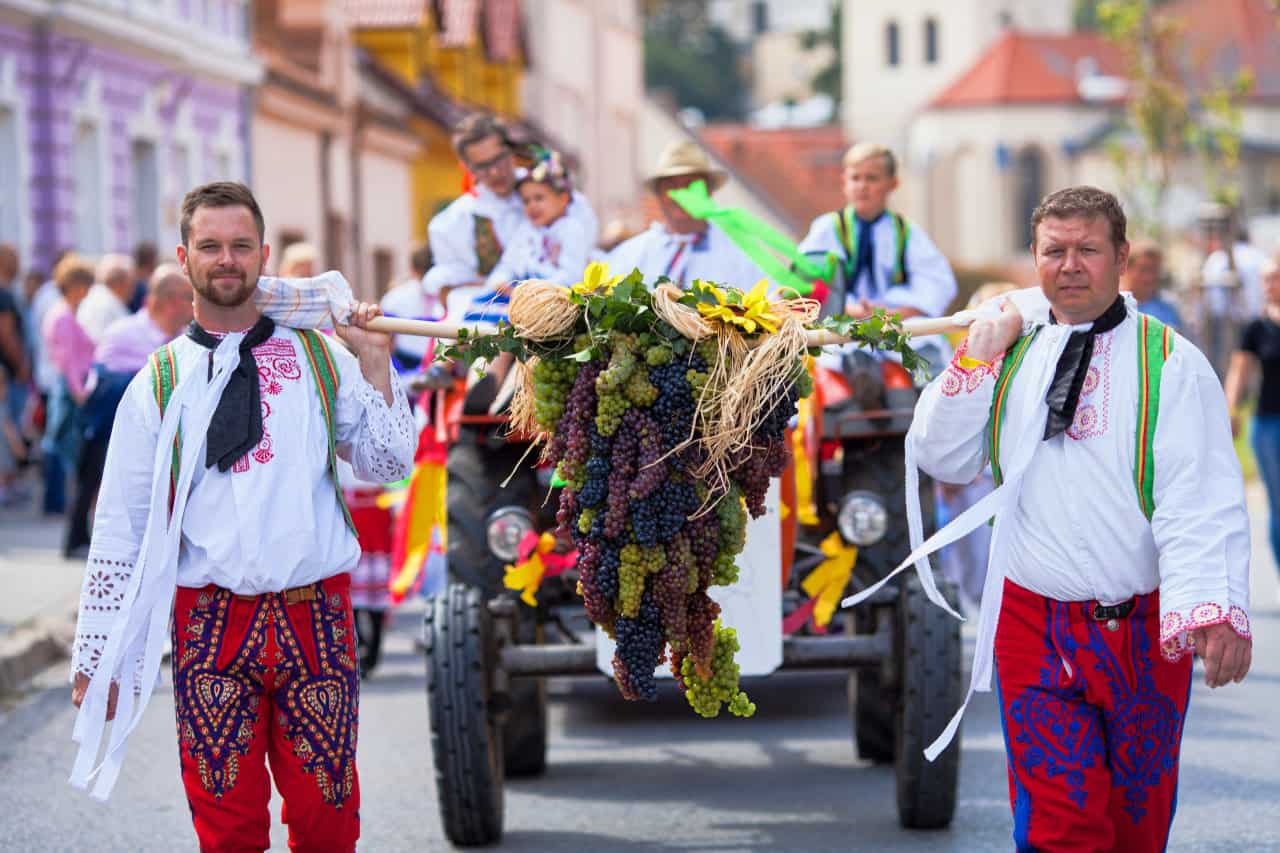
Sixty percent of Moravian wine is white. It’s equally distributed with 10.6 Pinot Gris, 9.5 Riesling, 9.2 Chardonnay, 8.7 Sauvignon Blanc and 7.8 Gewurztraminer among others. Pinot Noir dominates the red production at 17.4 percent.
Do a wine tasting at the Baroque-style Chateau Valtice. Take the Znojemska Wine Trail that covers 113 miles (189 kilometers) and connects 55 wine-growing villages. Visit the Plze Wine Cellars, 80 wine cellars built since the 15th century. Their brilliant white and blue paint make them look like little Greek Orthodox churches.
Ne zdravi to South Moravia.

If you’re thinking of going …
How do I get there? Several trains a day make the 3-½ journey from Prague to Brno. I paid €13. A closer location is Vienna. It’s 90 minutes away and train tickets start at €22. Rent a car to tour South Moravia. Rentals from Brno start at $28 a day.
Where do I stay? Hotel Continental, Kounicova 680/6, Brno, 420-541-519-111, Hotel Continental Brno – Your hotel in the centre of Brno, info@continentalbrno.cz. Communist-era hotel with excellent buffet breakfast a 10-minute walk from city center. Rooms start at €90.
Where do I eat? Spalicek, Zelny trh 12, Brno, 420-542-211-526, www.facebook.com/restaurace.spalicek. Oldest restaurant in Brno at the Cabbage Market. Traditional Czech dishes start at €4.
When should I go? September was ideal. Few tourists with temperatures ranging from high 40s to high 60s. August is mid-50s to high 70s. January is cold with snow, from mid-20s to mid-30s.
More information: Tourist Authority of South Moravia, 420-601-531-328, Radnicka 2, Brno, www.acrjm.cz/en, info@ccrjm.cz.
TIC Brno, Radnicka 8, Old Town Hall, 420-542-427-150, www.gotobrno.cz, 8:30 a.m.-6 p.m. Monday-Friday, 9 a.m.-6 p.m. Saturday and Sunday.


October 12, 2022 @ 8:33 pm
I never hear my Moravian relatives mention the heritage of wine- I think they just did their religious thing, but this was most interesting. Thanks.